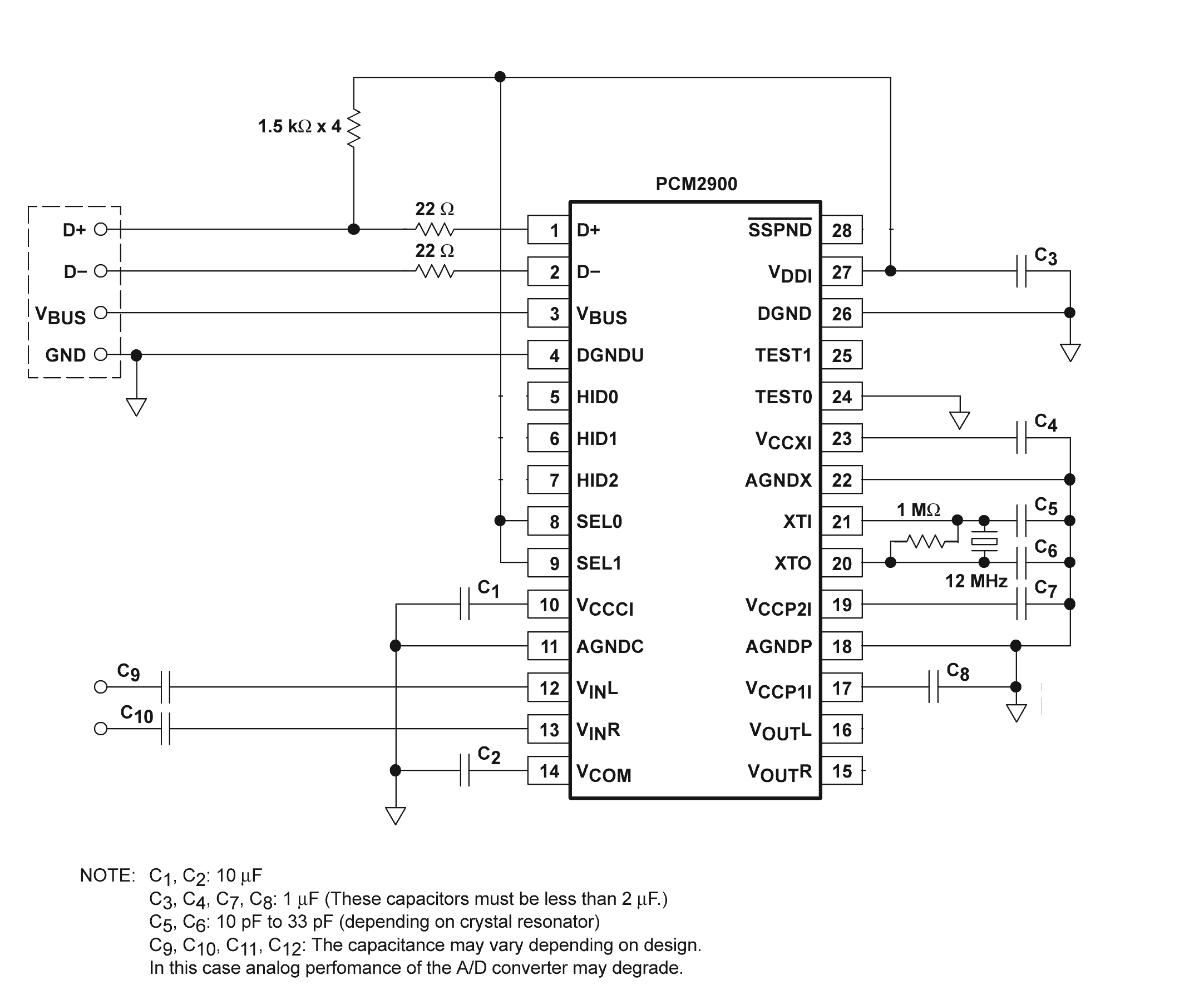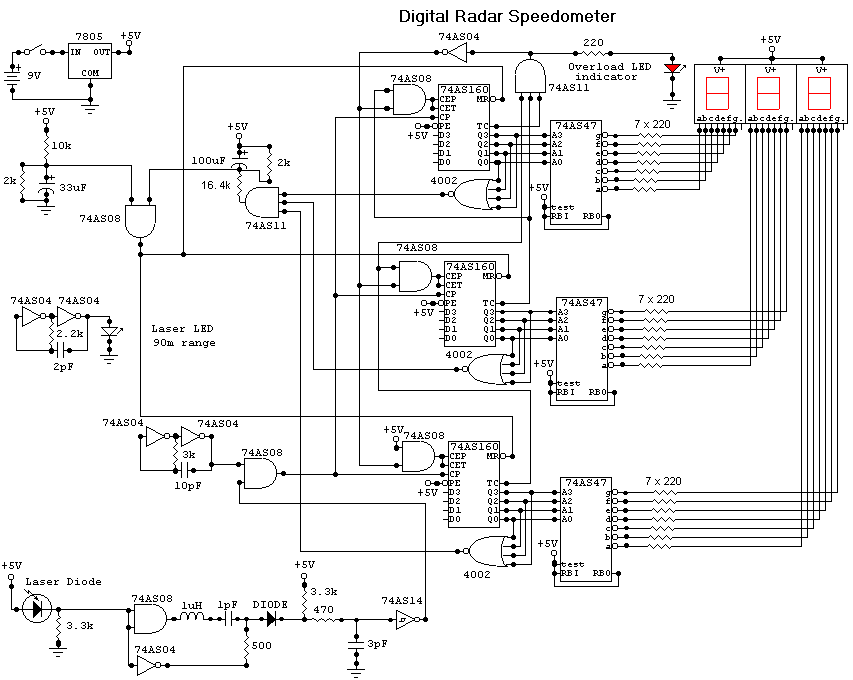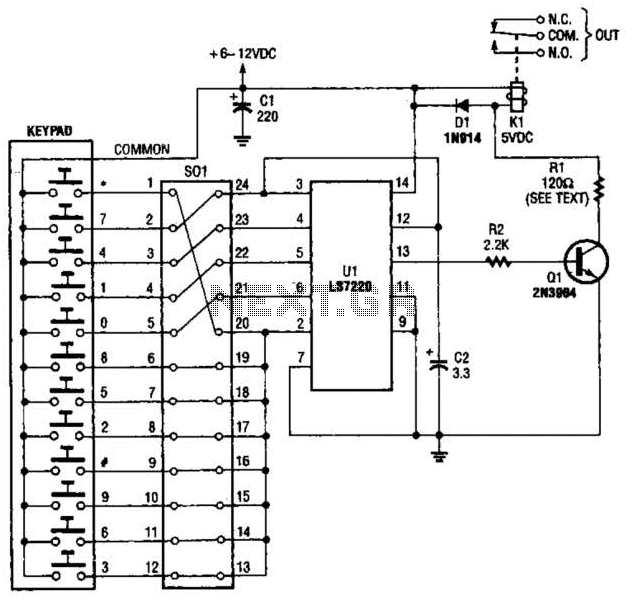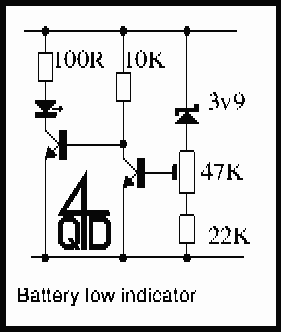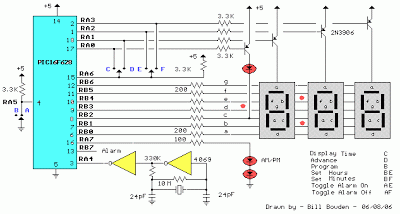
AC DIGITAL CLOCK WITH STANDBY BATTERY
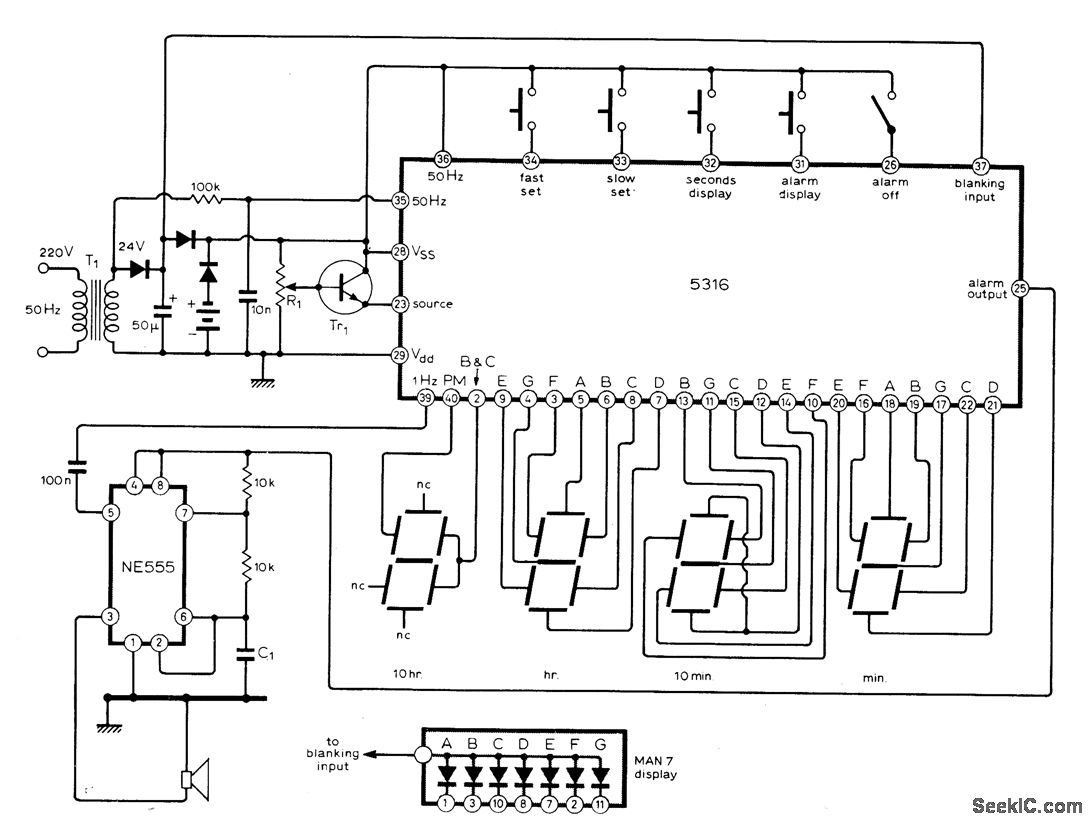
The circuit utilizes the MM5316 alarm-clock integrated circuit (IC), which is originally intended for driving LCD or fluorescent displays. In this implementation, it has been adapted for use with LED display diodes. The system is designed to operate on batteries in the event of an AC power failure, incorporating a display blanking feature to extend battery life. While the accuracy of timekeeping on battery power may be compromised, the use of batteries facilitates easier resetting of both time and alarm settings following an AC interruption. The alarm function is generated using a 555 timer configured as a multivibrator to produce a frequency-shifted warble tone at the output. Time adjustments can be made using fast and slow buttons, while the alarm can also be set using these same buttons when the alarm-display button is pressed. The specification of the transistor type is not critical.
The circuit design incorporates several key components and functions that contribute to its overall operation. The MM5316 IC serves as the central timing and control unit, managing both the timekeeping and alarm functionalities. The adaptation for LED displays involves careful consideration of the current limiting resistors to ensure proper brightness without exceeding the forward voltage ratings of the LEDs.
In the event of an AC power failure, the circuit seamlessly switches to battery operation. This transition is facilitated by a power management circuit that detects the loss of AC voltage, activating the battery supply while simultaneously engaging the display blanking feature. This function significantly conserves battery life by turning off the display when not in use, thereby extending the operational time of the clock on battery power.
The alarm system employs a 555 timer configured in astable mode to generate a warble tone, which is characterized by a modulated frequency output. This modulation can be adjusted by varying the resistors and capacitors in the timer circuit, allowing customization of the alarm sound to suit user preferences. The fast and slow buttons provide a user-friendly interface for setting the time and alarm, with the additional functionality of the alarm-display button allowing for easy toggling between time and alarm settings.
Overall, this circuit exemplifies a practical approach to alarm clock design, combining traditional timing mechanisms with modern display technology and power management strategies to enhance usability and functionality. The flexibility in component selection, particularly regarding the transistor, allows for a range of options that can accommodate different design requirements without compromising performance.Uses MM5316 alarm-clock IC, originally designed to drive LCD or fluorescent displays, but modified here for LED display Diodes and batteries provide power if AC fails, with blanking of display to extend battery life. Accuracy is poor on batteries but batteries make resetting of time and alarm easier after AC interruption.
Alarm uses 555 multivibrator to produce frequency-shfft warble on output tone. Time is set by fast and slow buttons, and alarm is set with same buttons while depressing alarm-display button. Transistor type is not critical. -M. F. Smith, Digital Alarm Clock, Wireless World, Nov. 1976, p 62. 🔗 External reference
The circuit design incorporates several key components and functions that contribute to its overall operation. The MM5316 IC serves as the central timing and control unit, managing both the timekeeping and alarm functionalities. The adaptation for LED displays involves careful consideration of the current limiting resistors to ensure proper brightness without exceeding the forward voltage ratings of the LEDs.
In the event of an AC power failure, the circuit seamlessly switches to battery operation. This transition is facilitated by a power management circuit that detects the loss of AC voltage, activating the battery supply while simultaneously engaging the display blanking feature. This function significantly conserves battery life by turning off the display when not in use, thereby extending the operational time of the clock on battery power.
The alarm system employs a 555 timer configured in astable mode to generate a warble tone, which is characterized by a modulated frequency output. This modulation can be adjusted by varying the resistors and capacitors in the timer circuit, allowing customization of the alarm sound to suit user preferences. The fast and slow buttons provide a user-friendly interface for setting the time and alarm, with the additional functionality of the alarm-display button allowing for easy toggling between time and alarm settings.
Overall, this circuit exemplifies a practical approach to alarm clock design, combining traditional timing mechanisms with modern display technology and power management strategies to enhance usability and functionality. The flexibility in component selection, particularly regarding the transistor, allows for a range of options that can accommodate different design requirements without compromising performance.Uses MM5316 alarm-clock IC, originally designed to drive LCD or fluorescent displays, but modified here for LED display Diodes and batteries provide power if AC fails, with blanking of display to extend battery life. Accuracy is poor on batteries but batteries make resetting of time and alarm easier after AC interruption.
Alarm uses 555 multivibrator to produce frequency-shfft warble on output tone. Time is set by fast and slow buttons, and alarm is set with same buttons while depressing alarm-display button. Transistor type is not critical. -M. F. Smith, Digital Alarm Clock, Wireless World, Nov. 1976, p 62. 🔗 External reference
